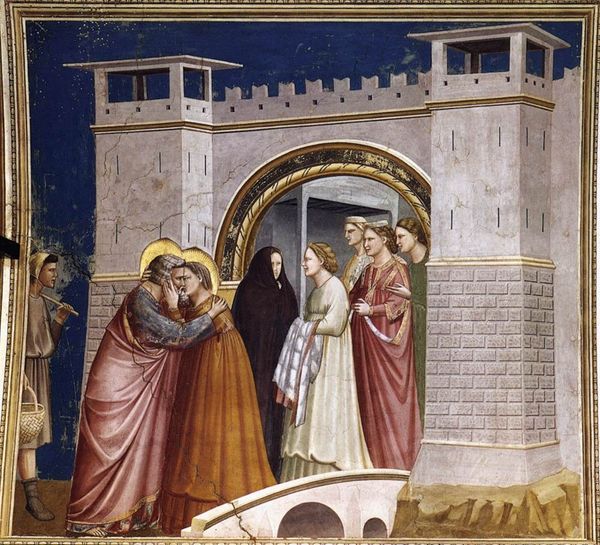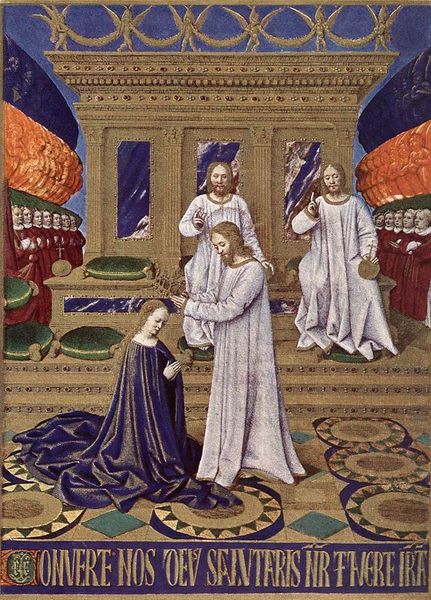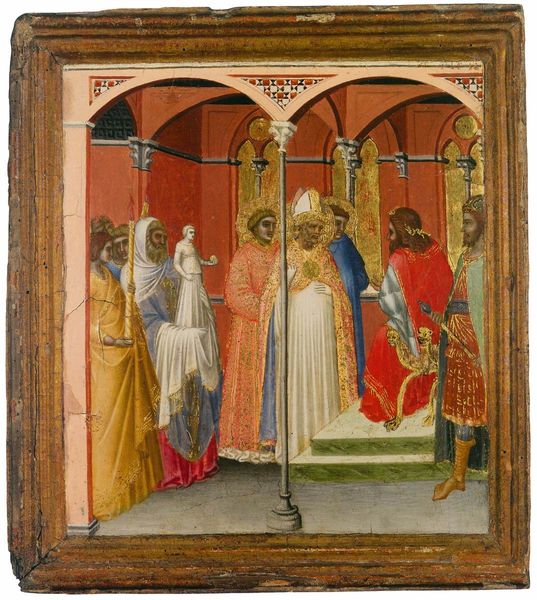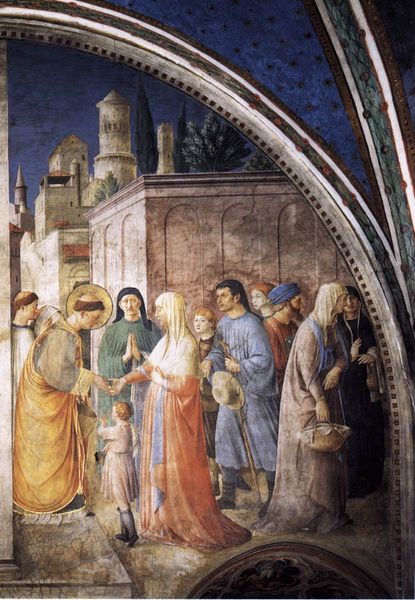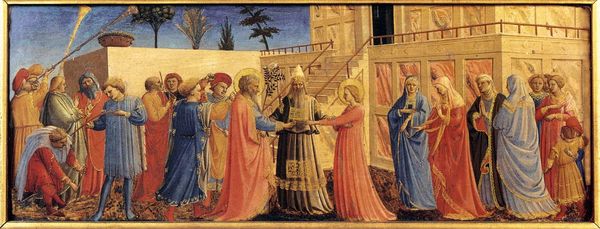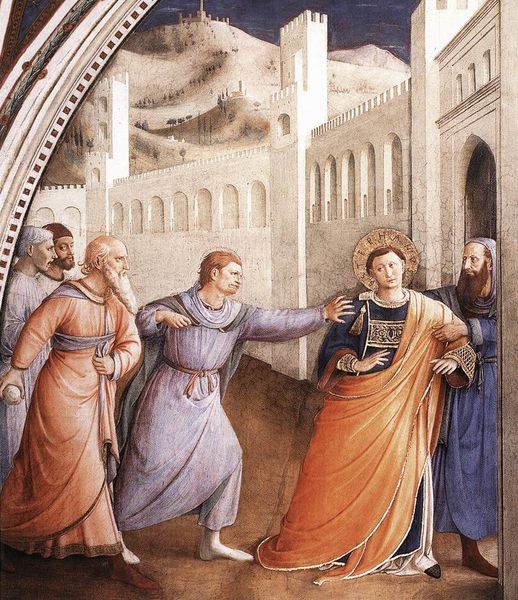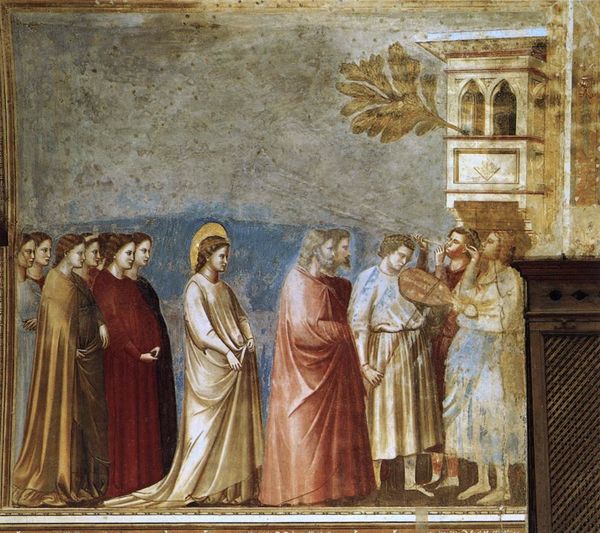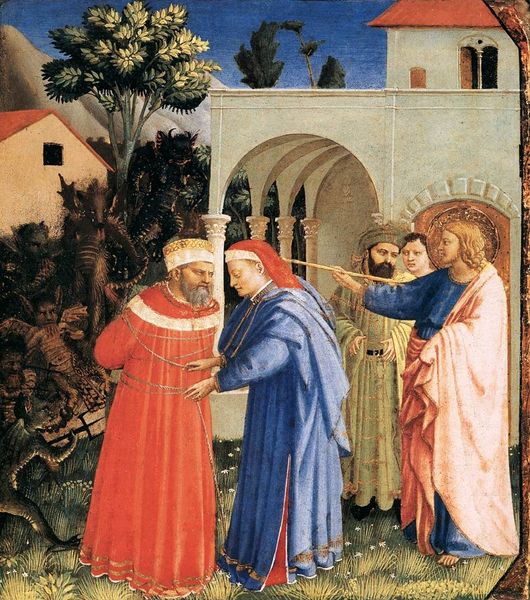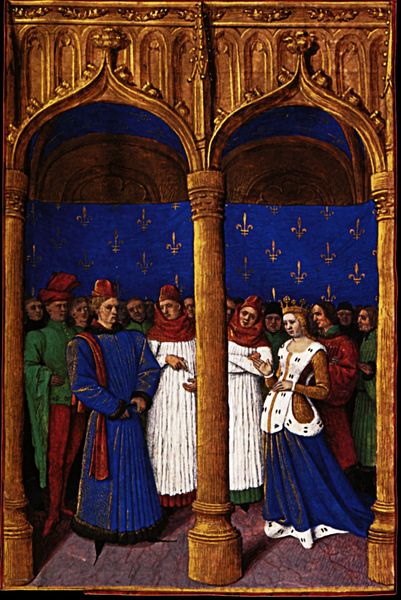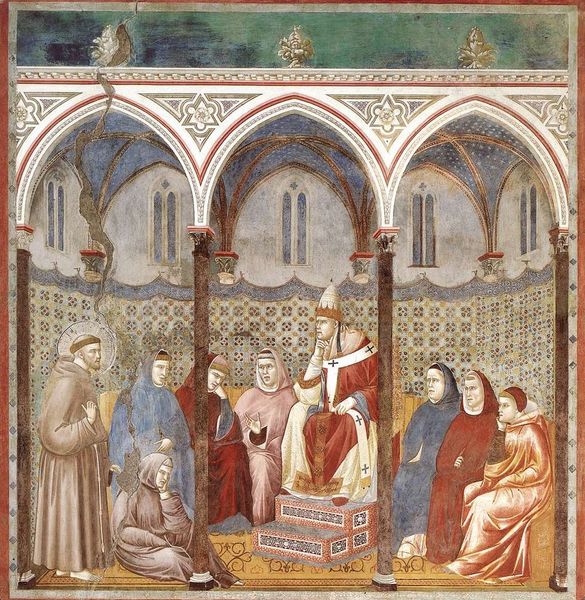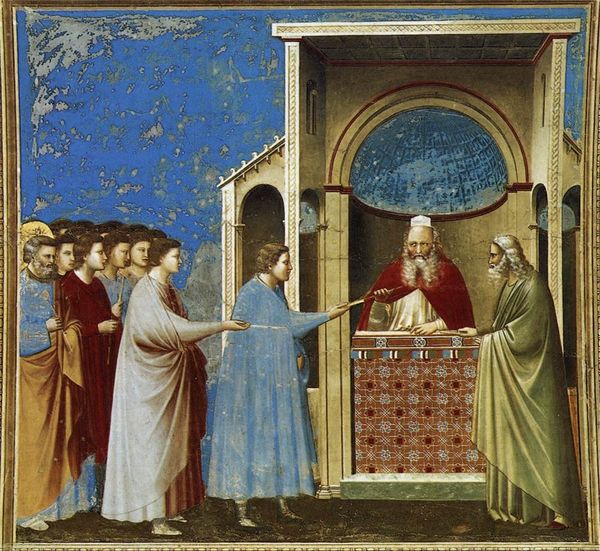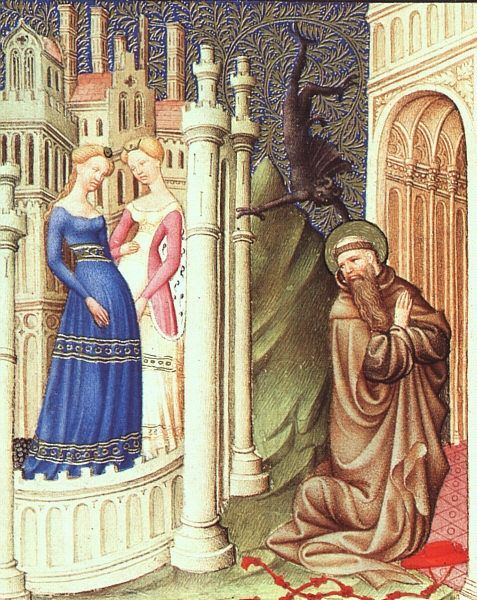
painting, fresco
#
portrait
#
medieval
#
narrative-art
#
painting
#
figuration
#
fresco
#
oil painting
#
christianity
#
history-painting
#
italian-renaissance
#
early-renaissance
#
portrait art
#
virgin-mary
#
christ
Dimensions: 150 x 140 cm
Copyright: Public domain
Curator: Let’s take a look at Giotto's "Visitation," a fresco painted around 1306, part of his cycle in the Scrovegni Chapel in Padua. Editor: It's striking how intimate it feels. Despite the formality, the two central figures seem completely absorbed in their embrace. It almost has the quiet energy of a freeze-frame from a play. Curator: It's a pivotal moment, indeed, the meeting of Mary and Elizabeth, both pregnant and carrying extraordinary destinies. The chapel itself was commissioned by Enrico Scrovegni to atone for his father's sins of usury; therefore, its entire program including the narrative scene here reflects his devotional aspirations. Editor: What about the physical process of creating these frescoes? It’s hard to imagine the sheer labor involved in plastering the wall, transferring the design, and then applying pigment quickly, before it dries. Fresco painting seems like an unforgiving process, needing specific materials and real planning! Curator: Absolutely. And Giotto's workshop would have been a hive of activity, carefully coordinated. Remember, this isn't just "art," it's a deeply embedded expression of faith and social status operating within specific political and economic structures. The commission reflects wealth seeking legitimacy. Editor: And in looking closely, I notice the differences in texture, from the smoothness of the faces to the rougher, more expressive brushwork in the drapery. Did they have access to different pigment qualities that informed his technique and depiction of status and setting? Curator: Most likely. The blue, made from lapis lazuli, was particularly expensive. It highlights how even colour in a material sense carries value beyond aesthetics. What does Giotto prioritize materially? Editor: Well, the emphasis definitely lies with the human form. Even within those heavy, draped robes, there's a sense of volume and presence that wasn’t necessarily being achieved prior to this period. Curator: Agreed. Giotto moves toward naturalism within a structured religious narrative. In seeing how art became a way of expressing piety and simultaneously establishing power and commemorating one’s lineage, "Visitation" acts as a portal into a very interesting intersection in human history. Editor: Right. The materiality also underscores the transient nature of earthly existence against the divine narratives depicted and creates an interesting dichotomy when understood alongside labor of Giotto and the resources it would have required.
Comments
No comments
Be the first to comment and join the conversation on the ultimate creative platform.

